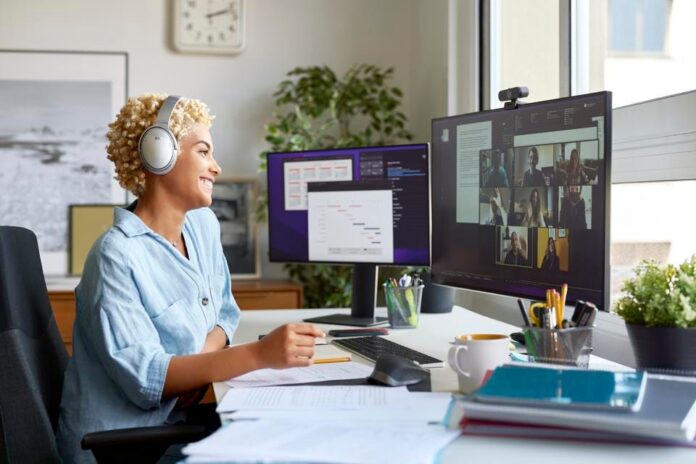There is a photo I love because it is a simple representation of how humans operate. Informally titled UX vs. Design, it shows the natural and inevitable outcome of designing something that doesn’t quite fit the way humans like to do things. The photo is of a shortcut made by hundreds of pedestrians who have all avoided the longer and more time-consuming effort of following a walkway that uses a 90-degree turn. Why take extra steps when you can cut across diagonally? Naturally, the resulting track of bare grass is unsightly and certainly not what the designers or their clients had envisioned.

This image is also a cautionary tale for people who design consumer or industrial products. Still, I think it also holds a lesson for hybrid work, especially when designing an effective policy around returning to the office, working from home or anywhere in between.
Managers and companies have been wrestling with how to design a new workplace for several years, ever since the pandemic forced everyone to work from home—effectively demonstrating that it could be done and done well. This awareness, paired with a substantial reluctance within the workforce to not return, came as something of a shock. Since then, managers have struggled with what to do. “How can you manage people you can’t see?” they asked, “and moreover, how can you trust them?” It was a rude awakening for many to discover how much their job involved overseeing other people.
To put it another way, it’s not that employees don’t want to work; it’s that many feel they are getting blocked from doing so by their manager.
I want to repeat that fact: most employees take pride in being able to get work done. They want to do good work and advance in their careers. That’s what managers should keep at the forefront of their minds while contemplating what their new normal will look like
Any manager who believes that every in-office employee spends every minute between 9:00 and 5:00 doing work is mistaken. Work has always been an ebb and flow between focused work and other activities.
The fulcrum of this argument is not about time, it’s about trust. Each person will find their own way to get their tasks (work and domestic) done in a way that is actually far more conducive to productivity than a schedule full of meetings back at the office.
This is where we return to the image of the UX vs. Design footpath. The strategy for managers who are interested in pivoting their department into a new future could very reasonably include a greater hands-off approach, in which employees are empowered and entrusted with the task of “getting the work done,” rather than conforming to an office culture that, a century after its introduction, is not always a viable solution.
Reflexive Analysis
The COVID-19 pandemic has forever changed how we as a society view work. With new understandings of accessibility and feasibility we must reorganize the workforce in an attempt to eliminate unnecessary distractions, increase workflow and focus, and allow employees a better work-life balance. The critical analysis of the dreaded “manager” is an important perspective to view from afar (as well as intimately) in order to reframe how we see the traditional workflow.
New implementations of hybrid work have become popular, allowing for an unexpected market opening with digital collaboration in a virtual setting. This opening is relavent to DESIS Lab and the Hyve-3D as these are programs and technologies that fill that hole in the market by granting digital collaboration to a large number of people and communities. Designers from all across the globe can connect their Hyve-3D systems and create in tandem with each other with live feedback from their peers, effectively eliminating the geographical barrier between them. Distance is quickly becoming less and less of a limiting factor to projects and collaborative processes in a working environment.
How To Design A Better Hybrid Workplace: Let It Happen Naturally (forbes.com)
Ravichandran, Aruna. "How To Design A Better Hybrid Workplace: Let It Happen Naturally." Forbes, Integrated Whale Media Investments, 30 Aug. 2022, www.forbes.com/sites/forbestechcouncil/2022/08/30/how-to-design-a-better-hybrid-workplace-let-it-happen-naturally/?sh=1629603a3085. Accessed 30 Aug. 2022.




